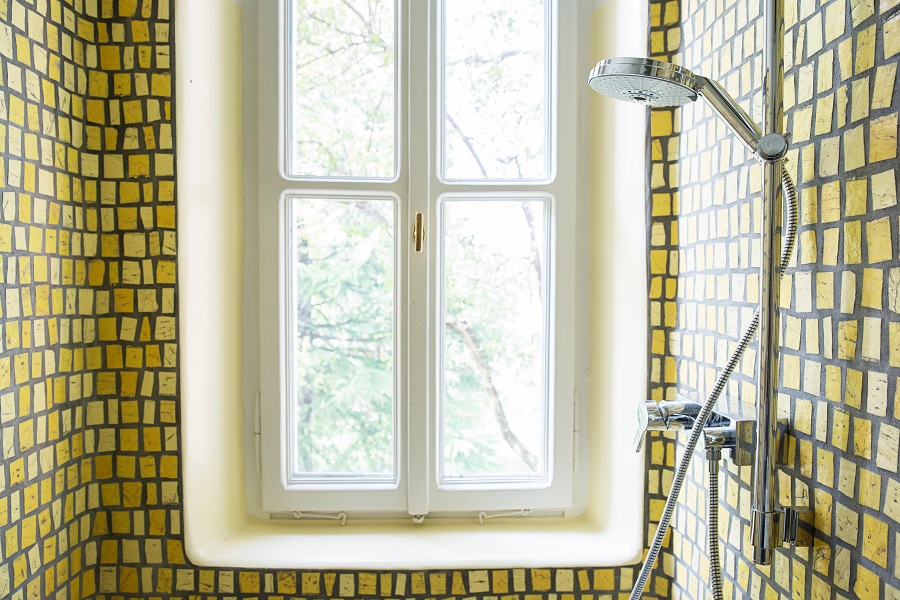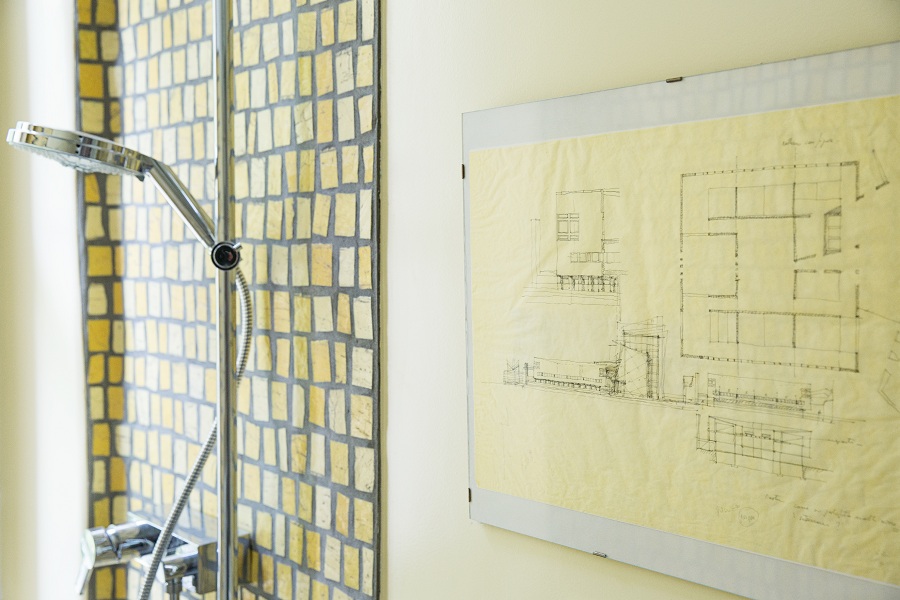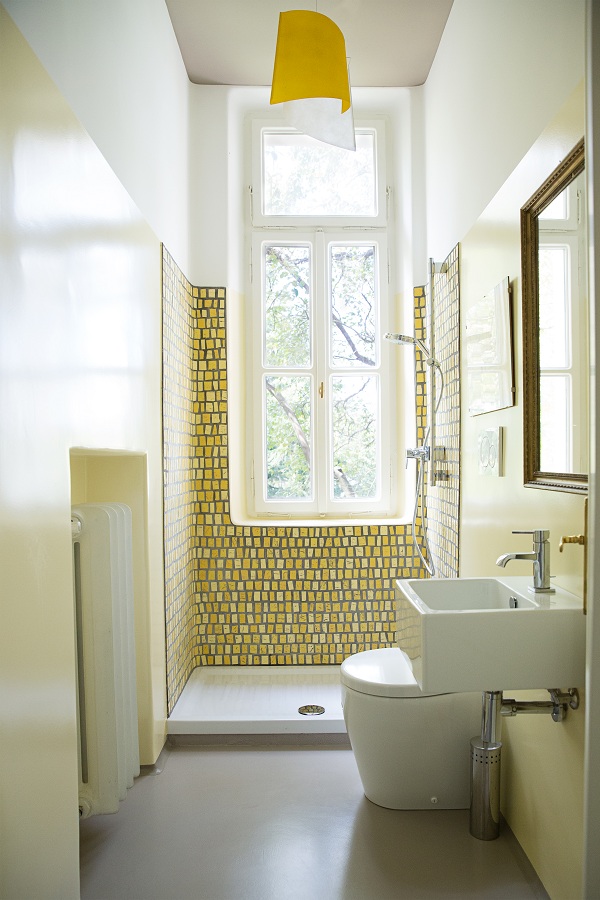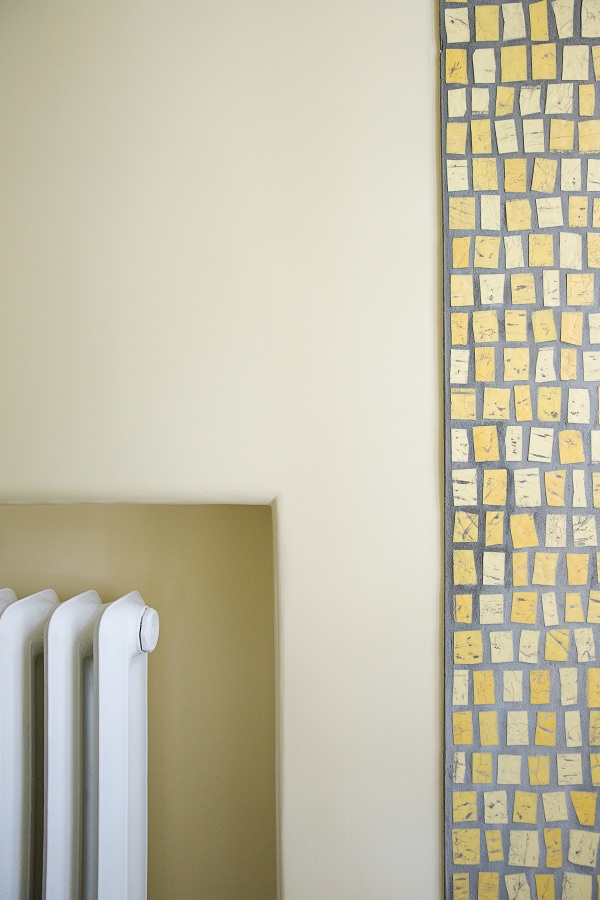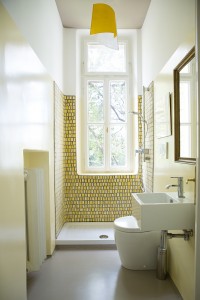The yellow bathroom. Homage to Carlo Scarpa.
Mosaic for bathrooms: it’s time to think about it in a different way, as a unique and fine work. Essential design, peculiarity of colour and dialogue between tradition and modernity are some properties that characterize the wall covering mosaic that we realized in the bathroom of a house built in 1913, during the works for its renovation.
We took inspiration from Carlo Scarpa‘s style, one of the greatest architects of last century, because this was the explicit desire of the architect-owner of the house. She loved especially the floor projected by the Venetian architect for Olivetti shop in S. Marco square in Venice, in 1958: a mosaic of big glass rectangular tesserae, laid with big distance between one and the other and some sought irregularity the recalls Paul Klee works.
We got deeply involved with the ideas of Carlo Scarpa, who managed to select the most significant elements of Venetian tradition and give them a very modern interpretation.
Enlightened by the elegant window, the mosaic is a composition of irregular tesserae of three different yellow gradations. This gives a slight vibration to the general effect and it’s a pleasure for the eye.
We used exclusively Venetian smalti of Mario Donà. Venetian smalto is a kind of opaque glass produced entirely by hand with traditional fusing ovens, like those of Murano. At the basis of chemical composition of smalti there are dust minerals (such as silica, lime carbonate and sodium carbonate) mixed with other components to obtain the different colours. This glass material has a good response to the hit of martellina (the mosaic hammer used to cut tesserae) and its quality make it resistant to every kind of deterioration. Ancient and noble materials for new and different mosaic for bathrooms.
